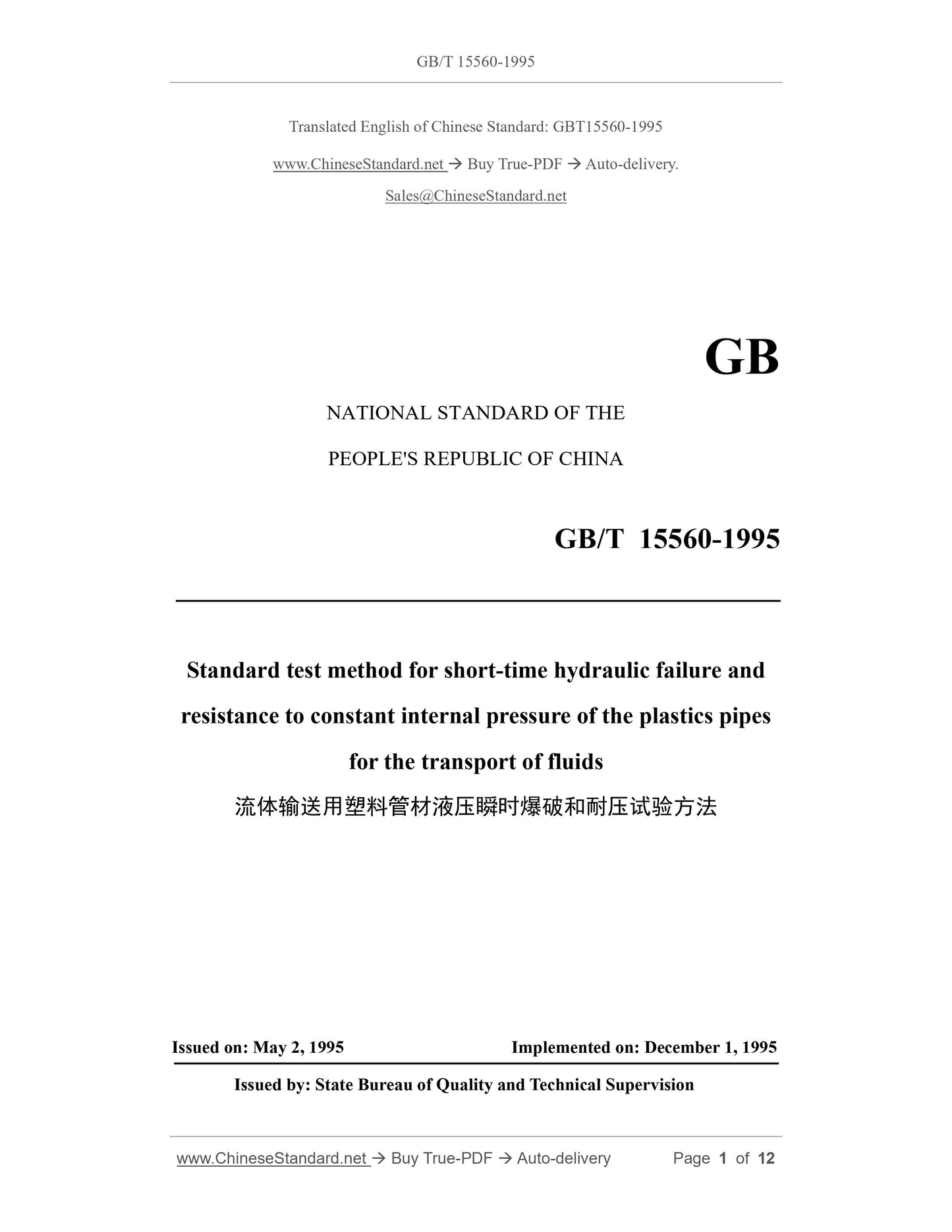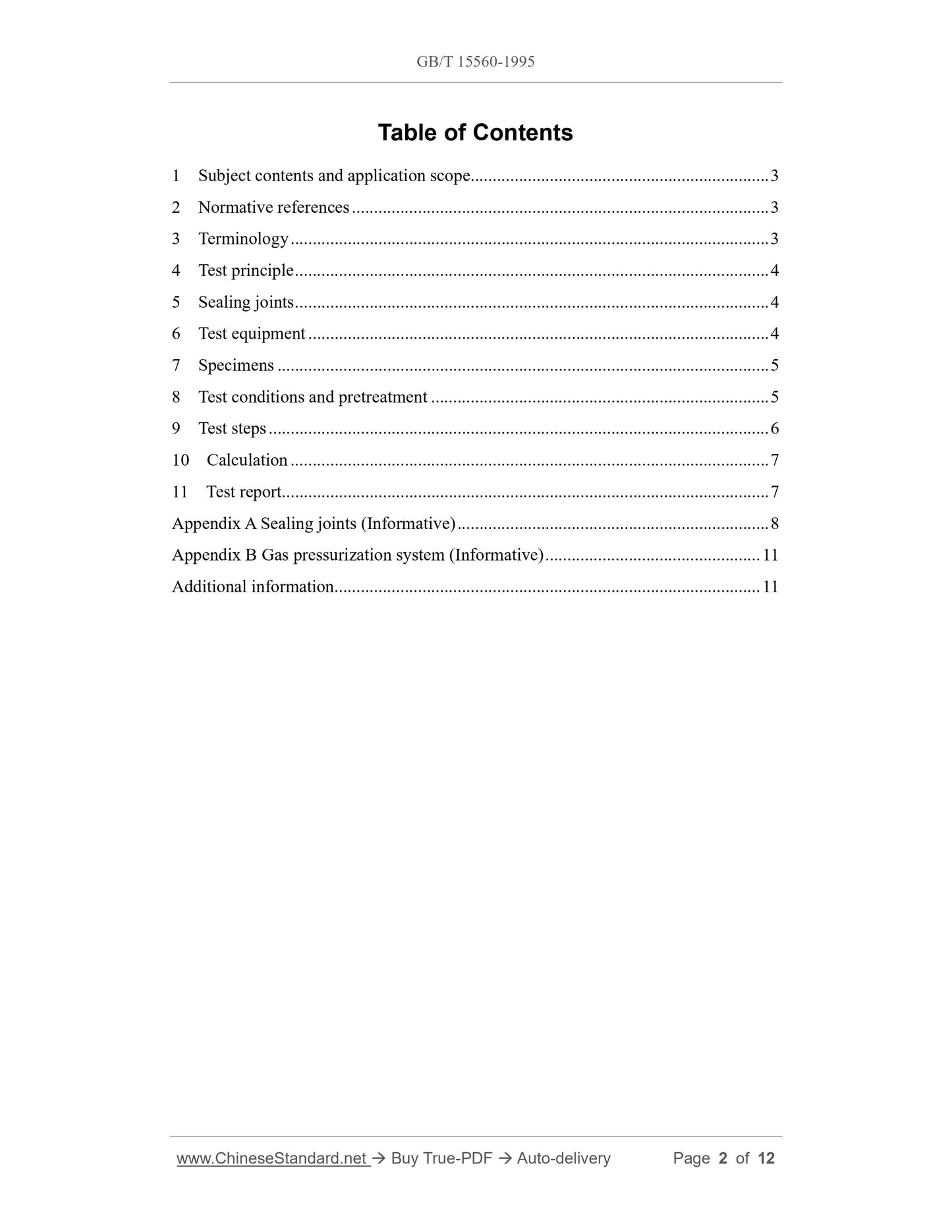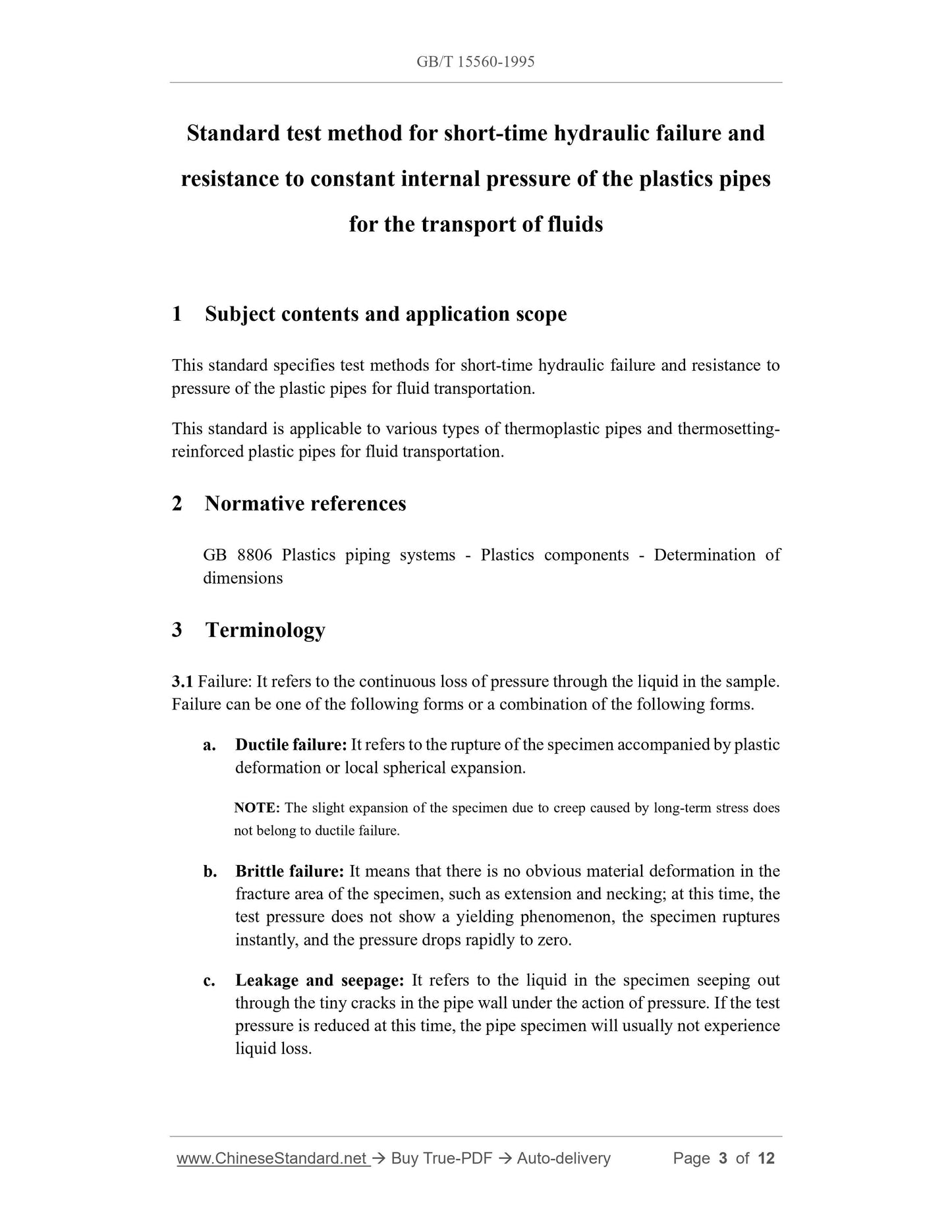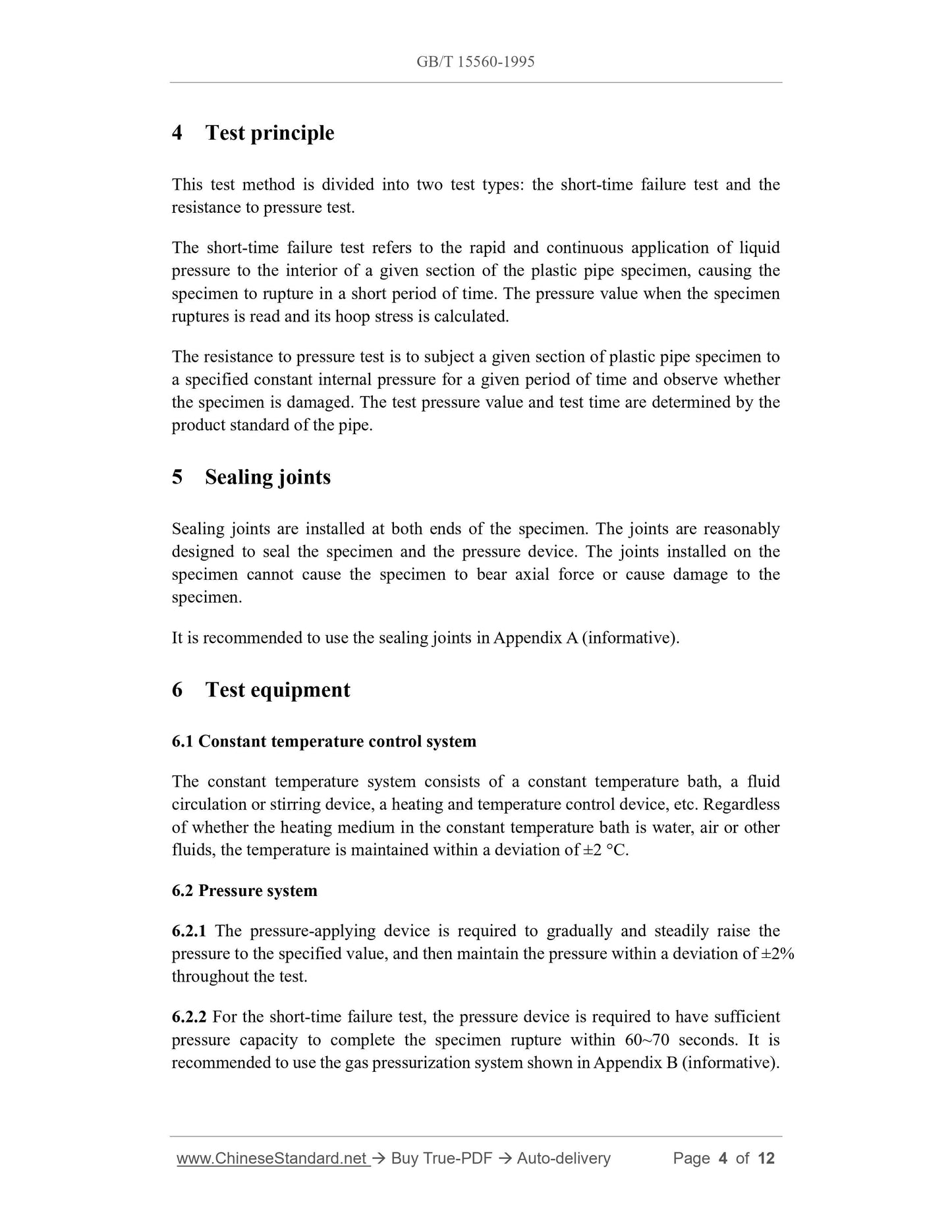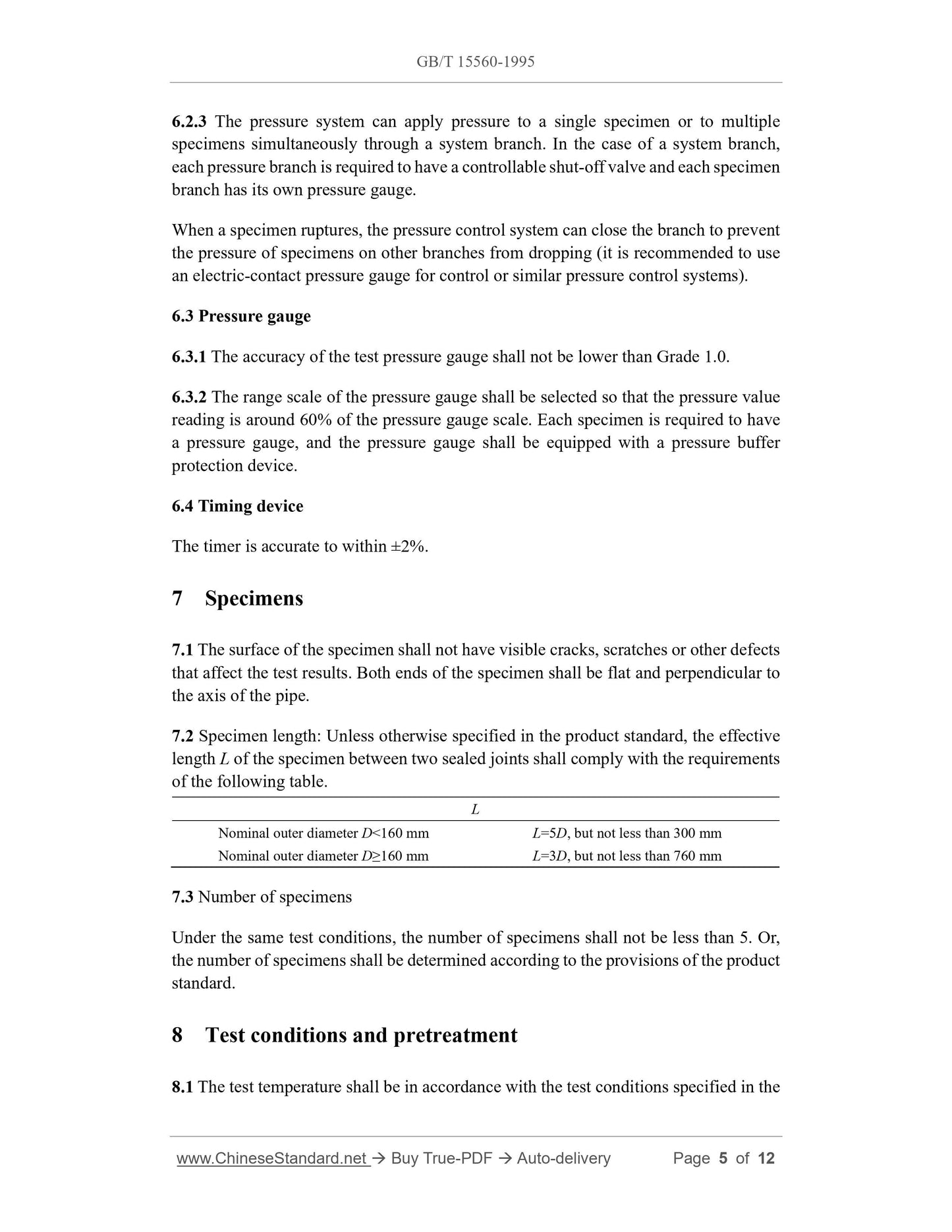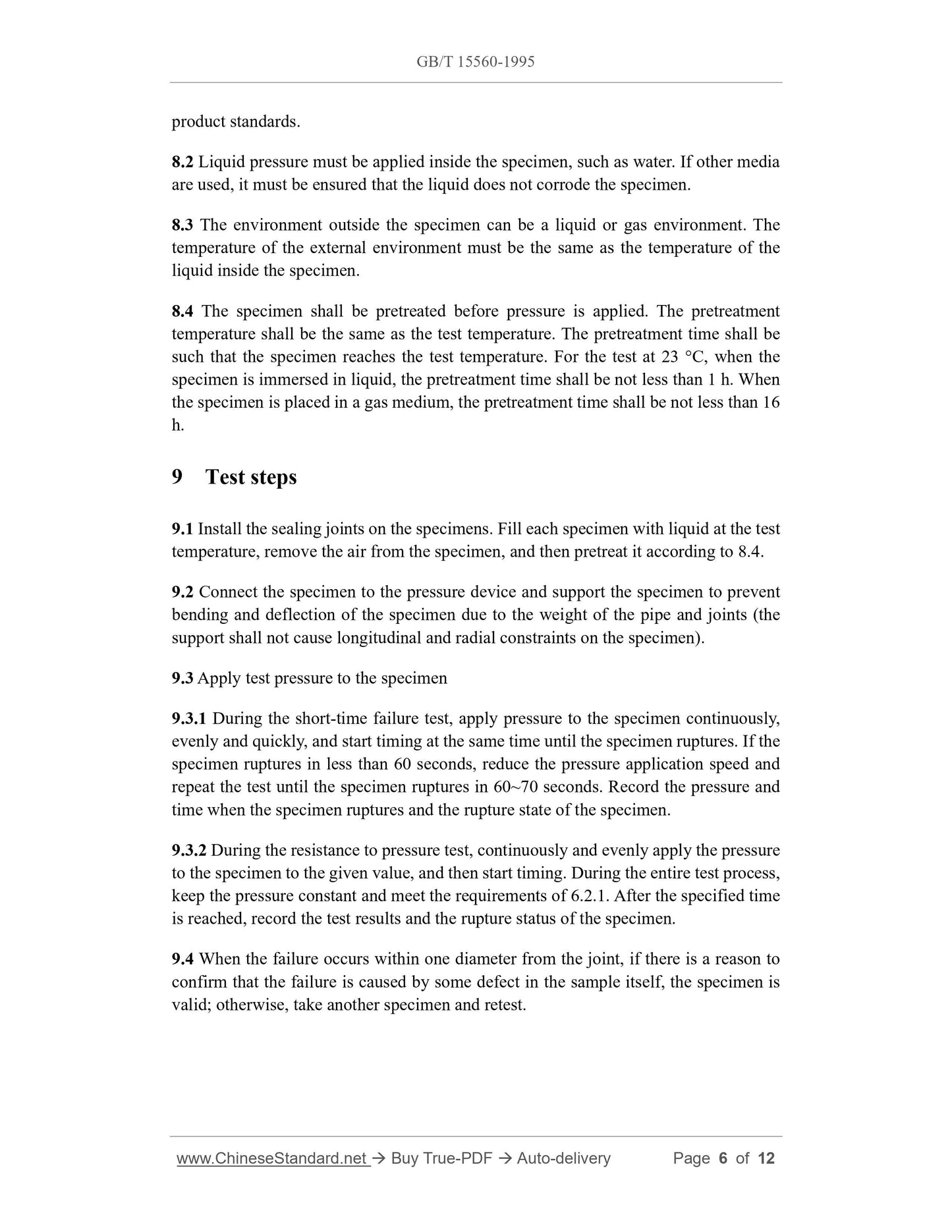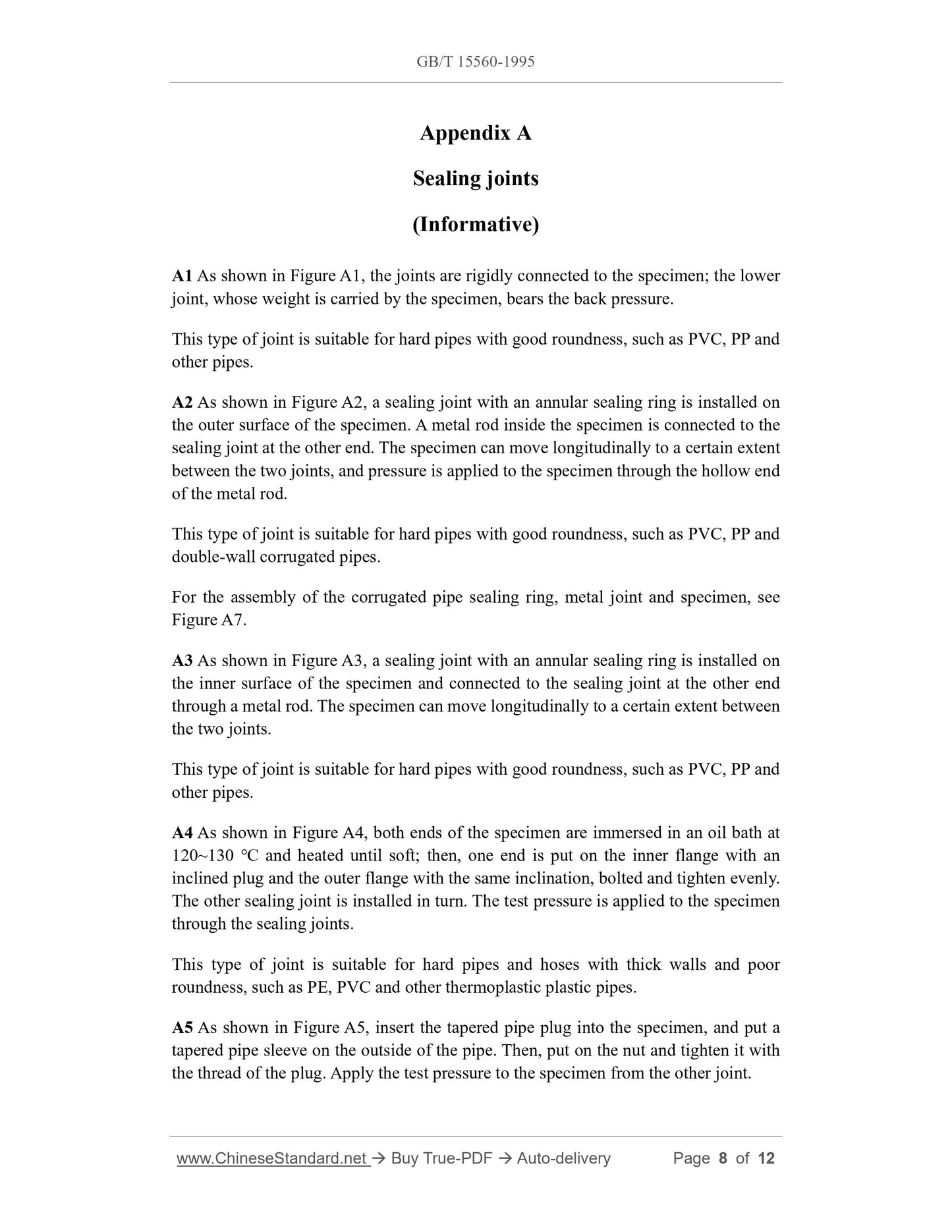1
/
of
7
www.ChineseStandard.us -- Field Test Asia Pte. Ltd.
GB/T 15560-1995 English PDF (GB/T15560-1995)
GB/T 15560-1995 English PDF (GB/T15560-1995)
Regular price
$245.00
Regular price
Sale price
$245.00
Unit price
/
per
Shipping calculated at checkout.
Couldn't load pickup availability
GB/T 15560-1995: Standard test method for short-time hydraulic failure and resistance to constant internal pressure of the plastics pipes for the transport of fluids
Delivery: 9 seconds. Download (and Email) true-PDF + Invoice.Get Quotation: Click GB/T 15560-1995 (Self-service in 1-minute)
Newer / historical versions: GB/T 15560-1995
Preview True-PDF
Scope
This standard specifies test methods for short-time hydraulic failure and resistance topressure of the plastic pipes for fluid transportation.
This standard is applicable to various types of thermoplastic pipes and thermosetting-
reinforced plastic pipes for fluid transportation.
Basic Data
| Standard ID | GB/T 15560-1995 (GB/T15560-1995) |
| Description (Translated English) | Standard test method for short-time hydraulic failure and resistance to constant internal pressure of the plastics pipes for the transport of fluids |
| Sector / Industry | National Standard (Recommended) |
| Classification of Chinese Standard | G33 |
| Classification of International Standard | 23.040.20 |
| Word Count Estimation | 7,728 |
| Date of Issue | 5/2/1995 |
| Date of Implementation | 12/1/1995 |
| Quoted Standard | GB/T 8806 |
| Issuing agency(ies) | State Bureau of Technical Supervision |
| Summary | This standard specifies the use of plastic pipe bursting and transient hydraulic pressure test fluid delivery methods. This standard applies to reinforced plastic pipes conveying fluid with various types of thermoplastic and thermosetting plastic pipe. |
Share
